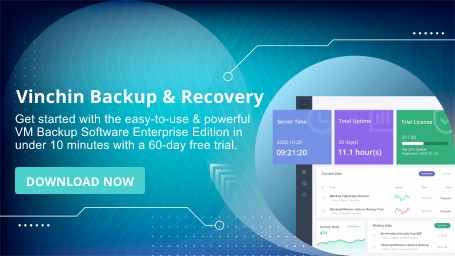-
Why Need Automated Management Tools?
-
Common VMware Automation Tools
-
VMware Automated Disaster Recovery Tool
-
VMware Automation Tools FAQs
-
Conclusion
As virtualization technology continues to evolve, enterprises increasingly rely on more efficient and flexible solutions to manage their complex virtualized environments. VMware, one of the leaders in the virtualization industry, offers a wide range of tools to enable automation, simplify management processes, and enhance the efficiency of IT infrastructure.
Why Need Automated Management Tools?
The growing complexity of virtualized environments drives the need for smarter tools to manage infrastructure. Manually managing hundreds or even thousands of virtual machines is time-consuming and prone to errors. Automation provides significant advantages in several key areas:
1. Reducing Human Errors: Automation tools can standardize configuration and management processes, ensuring consistency and lowering the risk of operational errors.
2. Increasing Efficiency: Automation saves a lot of time, especially when performing tasks in bulk, deploying VMs, allocating resources, and performing maintenance tasks, reducing delays caused by manual operations.
3. Enhancing Security and Compliance: With automation, enterprises can more easily track, record, and verify operations, thus improving compliance with regulatory requirements and ensuring the strict enforcement of security policies.
4. Optimizing Resource Allocation: Automation tools can automatically allocate or reclaim resources based on workloads, optimizing system performance and improving overall resource utilization.
Common VMware Automation Tools
VMware's automation tools are not only powerful but also highly integrative and extensible. With vCenter Server, enterprises can centrally manage all VMware resources and use these automation tools to simplify daily management tasks.
Additionally, VMware’s APIs and SDKs allow developers to create custom automation solutions based on these tools. Whether integrating with DevOps processes or existing IT management platforms, VMware automation tools offer a high degree of flexibility.
Below are some key VMware automation tools and their features.
1. VMware vRealize Automation (vRA)
VMware vRealize Automation (vRA) is a powerful automation platform designed to automate the delivery of IT services. vRA helps IT departments and development teams quickly build and manage hybrid cloud environments through policy-based service delivery.
Key Features:
Workflow Automation: vRA provides flexible workflow design and automation, allowing users to define complex workflows and automate them.
Multi-Cloud Support: vRA supports multiple cloud platforms, including on-premise VMware environments, Amazon Web Services (AWS), Microsoft Azure, and more.
Self-Service Portal: Users can request VMs and other IT resources through vRA's self-service portal, enabling quick resource delivery.
Policy-Driven Resource Management: By configuring and enforcing resource allocation policies, vRA ensures optimal utilization of virtualized resources and prevents resource wastage.
vRA is especially suitable for enterprises that need to frequently deliver IT services, particularly in DevOps environments, where it provides rapid resource deployment capabilities, effectively accelerating development and testing cycles. Additionally, for enterprises looking to adopt a hybrid cloud strategy, vRA’s multi-cloud support helps easily manage different cloud platforms.
2. VMware PowerCLI
VMware PowerCLI is a command-line tool based on PowerShell that offers powerful automation capabilities, helping IT professionals manage VMware infrastructure. With PowerCLI, you can use scripts to manage VMs, network devices, and storage resources in bulk, greatly improving management efficiency.
Key Features:
VM Management: Users can use PowerCLI scripts to create, modify, and delete VMs in bulk, enabling automated deployment.
Cluster Management: PowerCLI automates the management of hosts, network, and storage resources within VMware clusters.
Task Scheduling: PowerCLI integrates with Windows Task Scheduler to automate routine tasks such as backups, upgrades, or monitoring operations.
Flexibility and Extensibility: PowerCLI has a large number of cmdlets (commands) that allow highly customized management tasks.
PowerCLI is particularly suitable for IT professionals who need to customize the management of virtualized environments on a large scale. For batch task operations and routine maintenance tasks, PowerCLI can significantly reduce operation time and ensure consistency.
3. VMware vRealize Orchestrator (vRO)
vRealize Orchestrator (vRO) is a powerful workflow automation engine from VMware that allows users to create and manage complex automated workflows. vRO is often integrated with vRA to automate infrastructure, applications, and cloud service management processes more broadly.
Key Features:
Workflow Automation: vRO allows users to design complex workflows through a simple graphical interface, covering VM management, user creation, application deployment, and more.
Extensibility: vRO offers extensive plugin support, allowing users to integrate different third-party systems into the automation process, such as Active Directory, vCenter Server, and more.
Deep Integration with vRA: vRO is commonly used with vRealize Automation, forming a powerful automation solution.
vRO is particularly suitable for enterprises that need to automate complex tasks, especially those involving the management of resources across multiple systems and platforms. By creating customized workflows, vRO can significantly reduce manual operations and improve management efficiency.
4. VMware NSX Automation
NSX is VMware's network virtualization platform that enables automated configuration and management of network resources. NSX Automation allows users to quickly create and manage networks through APIs or automation tools and offers features like network segmentation, load balancing, and routing.
Key Features:
Network Segmentation: NSX provides micro-segmentation, ensuring network isolation between VMs, improving security.
Automated Network Configuration: Users can configure networks directly through scripts or APIs, reducing the complexity of manual intervention.
Integrated Security Policies: NSX allows users to define policy-based network security rules, automating network traffic control and firewall configuration.
NSX Automation is ideal for enterprises with complex network needs, especially in multi-tenant environments where network isolation and automated network management are critical. With NSX, IT teams can respond more effectively to changing network demands.
VMware Automated Disaster Recovery Tool
Vinchin Backup & Recovery is a robust VMware environment protection solution, which provides advanced backup features, including automatic VM backup, agentless backup, LAN/LAN-Free backup, offsite copy, instant recovery, effective data reduction, cloud archive and etc., strictly following 3-2-1 golden backup architecture to comprehensively secure your data security and integrity.
Besides, data encryption and anti-ransomware protection offer you dual insurance to protect your VMware VM backups. You can also simply migrate data from a VMware host to another virtual platform and vice versa.
It only takes 4 steps for you to backup VMware VMs:
1. Select the backup object.
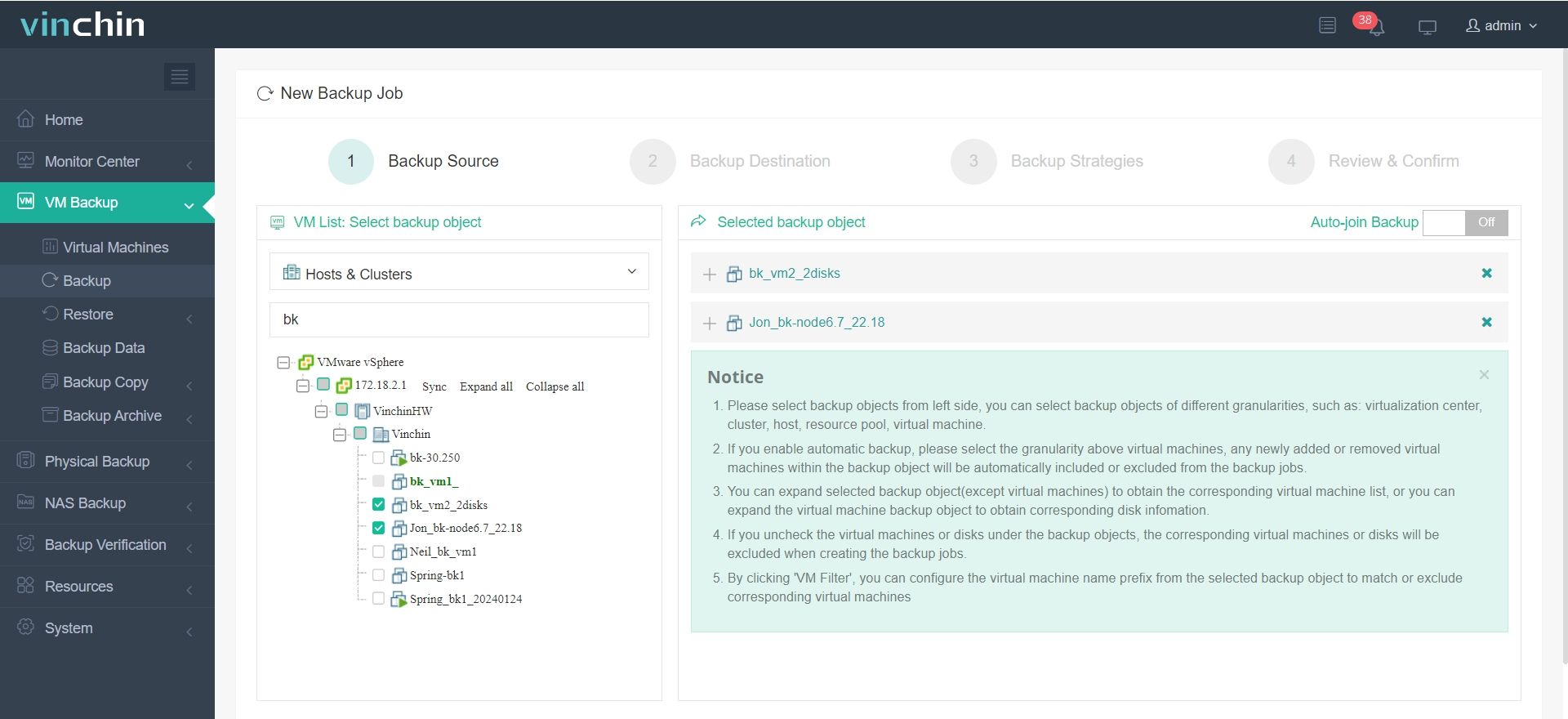
2. Select backup destination.
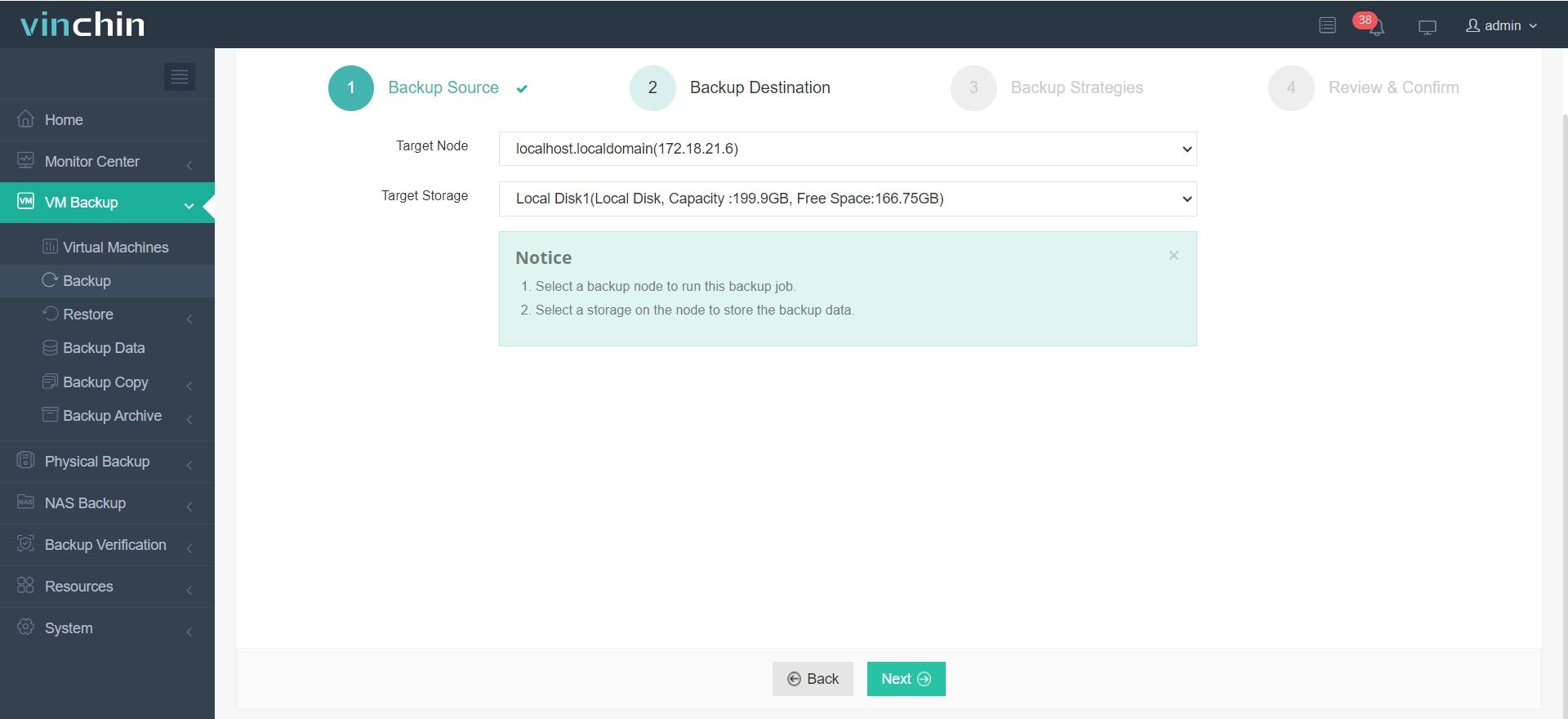
3. Configure backup strategies.
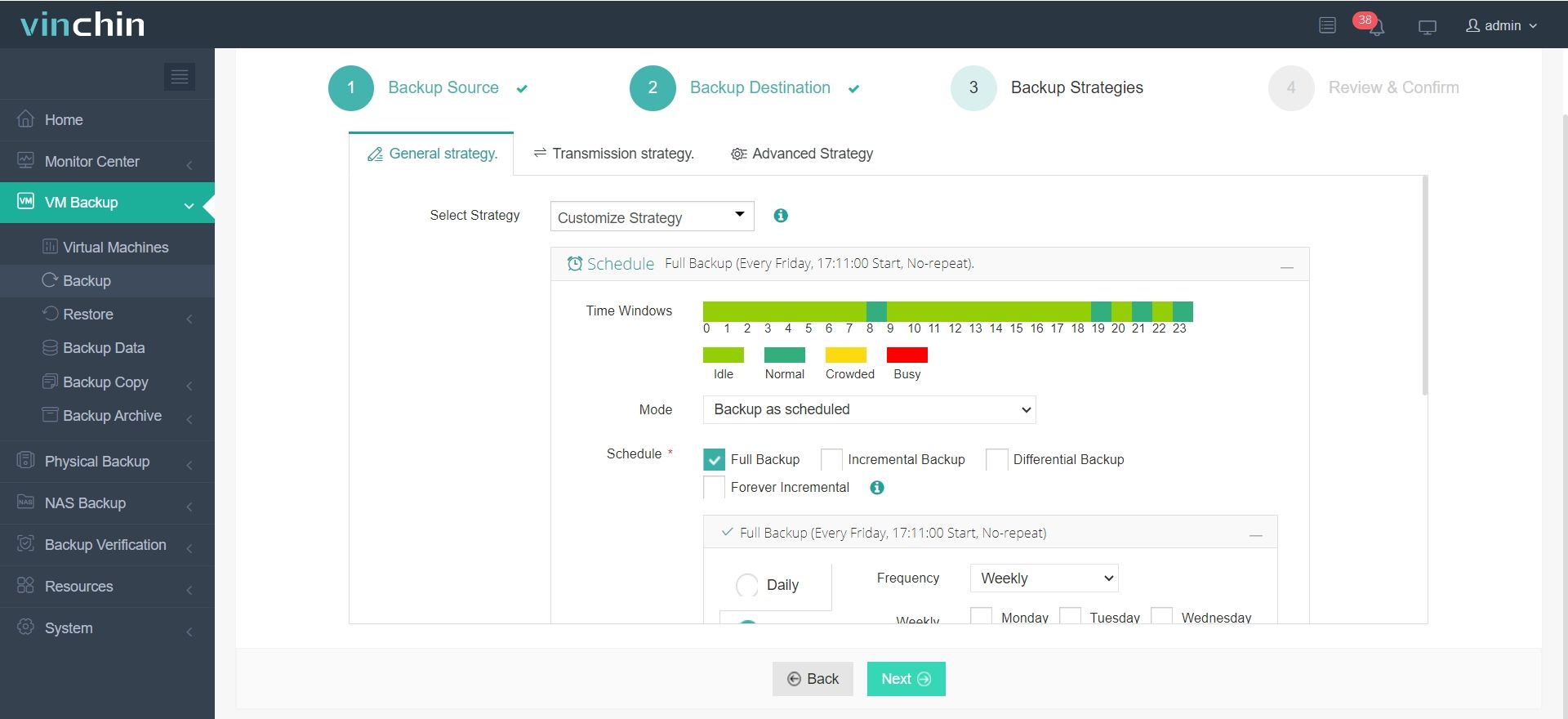
4. Review and submit the job.
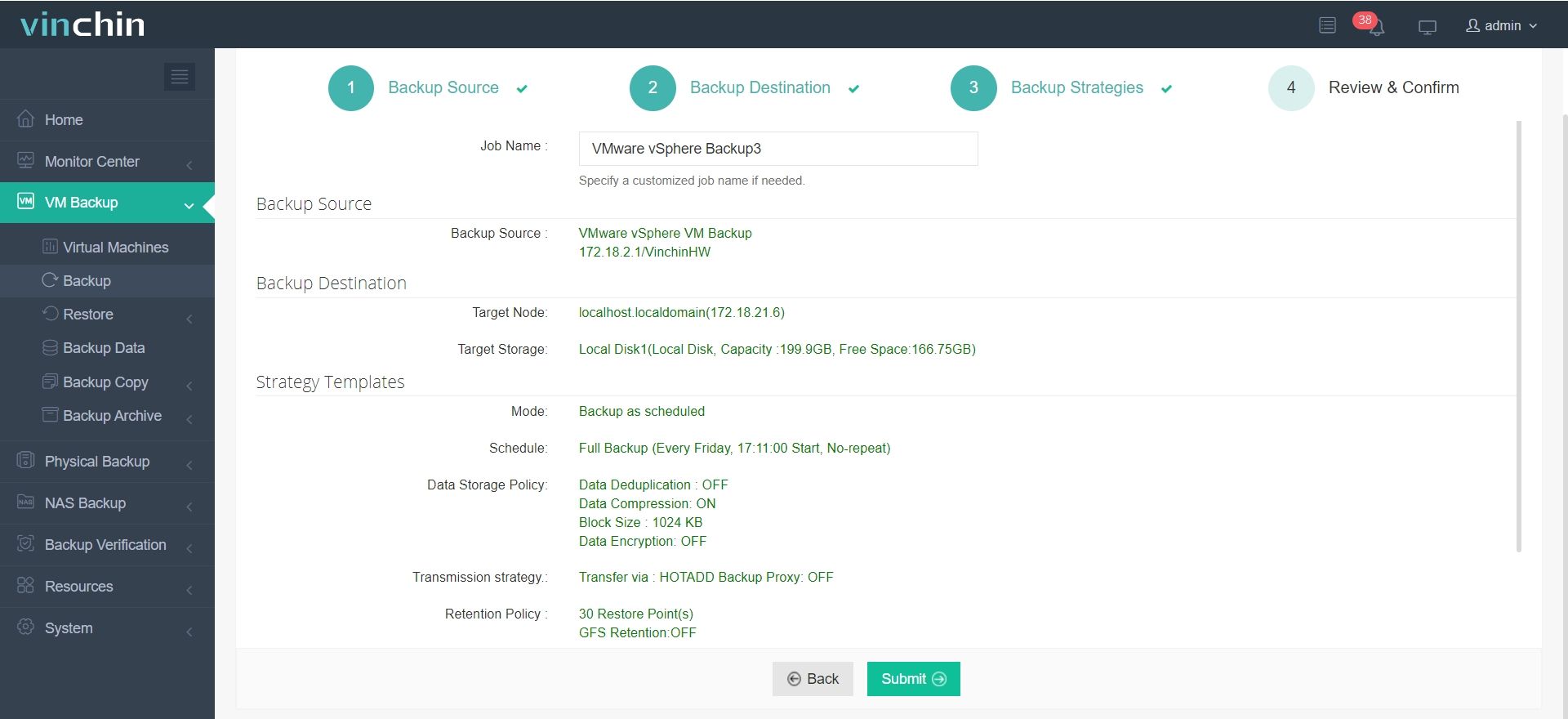
Try the 60-day full featured free trail of Vinchin Backup & Recovery now to easily protect your VMware data and achieve automated backup and fast recovery!
VMware Automation Tools FAQs
1. Q: How does VMware Orchestrator integrate with vRealize Automation?
A: VMware vRealize Orchestrator is a workflow automation engine that integrates seamlessly with vRealize Automation. vRO can execute custom workflows and orchestrate complex IT processes across different platforms and tools.
2. Q: What is vSphere Automation SDK?
A: The vSphere Automation SDK provides developers with libraries and code samples for automating VMware vSphere using REST APIs. It supports various programming languages like Python, Java, and .NET.
Conclusion
VMware's automation tools provide enterprises with powerful virtualization management capabilities, reducing manual operations, increasing management efficiency, and optimizing resource utilization. Automation not only helps enterprises simplify management processes in complex environments but also leverages intelligent technologies (such as machine learning and artificial intelligence) to further optimize resource allocation and enhance system security.
Share on:


